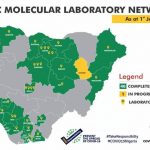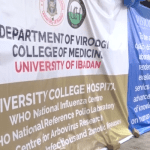A team of World Health Organization investigator visited a laboratory in China’s Wuhan city today, Wednesday that has been the focus of conspiracies and speculation about the origin of the coronavirus pandemic.
The WHO investigators began research in the central Chinese city last week, after a 14-day quarantine and bureaucratic delays.
The inspection of the Wuhan virology institute, which conducts research on the world’s most dangerous diseases, will be one of the most-watched stops on the team’s probe into the origins of the Covid-19 pandemic.
The sensitive mission, which China had delayed throughout the first year of the pandemic, has a remit to explore how the virus jumped from animal to human.
The lab in question, which is affiliated with the central government-run Chinese Academy of Sciences, is the only one in mainland China equipped for the highest level of biocontainment, known as Biosafety Level 4 (BSL-4).
WHO team member Peter Daszak said the team was “looking forward to a very productive day and to asking all the questions that we know need to be asked”.
Scientists think Covid-19, which first emerged in Wuhan and has gone on to kill more than two million people worldwide, originated in bats and could have been transmitted to people via another mammal.
All the WHO team have cautioned that any findings from the current investigation are likely to take a considerable amount of time, and spoken of a need to “manage expectations,” even as the eyes of the world are upon them.
A team of World Health Organization investigator visited a laboratory in China’s Wuhan city today, Wednesday that has been the focus of conspiracies and speculation about the origin of the coronavirus pandemic.
The WHO investigators began research in the central Chinese city last week, after a 14-day quarantine and bureaucratic delays.
The inspection of the Wuhan virology institute, which conducts research on the world’s most dangerous diseases, will be one of the most-watched stops on the team’s probe into the origins of the Covid-19 pandemic.
The sensitive mission, which China had delayed throughout the first year of the pandemic, has a remit to explore how the virus jumped from animal to human.
The lab in question, which is affiliated with the central government-run Chinese Academy of Sciences, is the only one in mainland China equipped for the highest level of biocontainment, known as Biosafety Level 4 (BSL-4).
WHO team member Peter Daszak said the team was “looking forward to a very productive day and to asking all the questions that we know need to be asked”.
Scientists think Covid-19, which first emerged in Wuhan and has gone on to kill more than two million people worldwide, originated in bats and could have been transmitted to people via another mammal.
All the WHO team have cautioned that any findings from the current investigation are likely to take a considerable amount of time, and spoken of a need to “manage expectations,” even as the eyes of the world are upon them.
A team of World Health Organization investigator visited a laboratory in China’s Wuhan city today, Wednesday that has been the focus of conspiracies and speculation about the origin of the coronavirus pandemic.
The WHO investigators began research in the central Chinese city last week, after a 14-day quarantine and bureaucratic delays.
The inspection of the Wuhan virology institute, which conducts research on the world’s most dangerous diseases, will be one of the most-watched stops on the team’s probe into the origins of the Covid-19 pandemic.
The sensitive mission, which China had delayed throughout the first year of the pandemic, has a remit to explore how the virus jumped from animal to human.
The lab in question, which is affiliated with the central government-run Chinese Academy of Sciences, is the only one in mainland China equipped for the highest level of biocontainment, known as Biosafety Level 4 (BSL-4).
WHO team member Peter Daszak said the team was “looking forward to a very productive day and to asking all the questions that we know need to be asked”.
Scientists think Covid-19, which first emerged in Wuhan and has gone on to kill more than two million people worldwide, originated in bats and could have been transmitted to people via another mammal.
All the WHO team have cautioned that any findings from the current investigation are likely to take a considerable amount of time, and spoken of a need to “manage expectations,” even as the eyes of the world are upon them.
A team of World Health Organization investigator visited a laboratory in China’s Wuhan city today, Wednesday that has been the focus of conspiracies and speculation about the origin of the coronavirus pandemic.
The WHO investigators began research in the central Chinese city last week, after a 14-day quarantine and bureaucratic delays.
The inspection of the Wuhan virology institute, which conducts research on the world’s most dangerous diseases, will be one of the most-watched stops on the team’s probe into the origins of the Covid-19 pandemic.
The sensitive mission, which China had delayed throughout the first year of the pandemic, has a remit to explore how the virus jumped from animal to human.
The lab in question, which is affiliated with the central government-run Chinese Academy of Sciences, is the only one in mainland China equipped for the highest level of biocontainment, known as Biosafety Level 4 (BSL-4).
WHO team member Peter Daszak said the team was “looking forward to a very productive day and to asking all the questions that we know need to be asked”.
Scientists think Covid-19, which first emerged in Wuhan and has gone on to kill more than two million people worldwide, originated in bats and could have been transmitted to people via another mammal.
All the WHO team have cautioned that any findings from the current investigation are likely to take a considerable amount of time, and spoken of a need to “manage expectations,” even as the eyes of the world are upon them.
A team of World Health Organization investigator visited a laboratory in China’s Wuhan city today, Wednesday that has been the focus of conspiracies and speculation about the origin of the coronavirus pandemic.
The WHO investigators began research in the central Chinese city last week, after a 14-day quarantine and bureaucratic delays.
The inspection of the Wuhan virology institute, which conducts research on the world’s most dangerous diseases, will be one of the most-watched stops on the team’s probe into the origins of the Covid-19 pandemic.
The sensitive mission, which China had delayed throughout the first year of the pandemic, has a remit to explore how the virus jumped from animal to human.
The lab in question, which is affiliated with the central government-run Chinese Academy of Sciences, is the only one in mainland China equipped for the highest level of biocontainment, known as Biosafety Level 4 (BSL-4).
WHO team member Peter Daszak said the team was “looking forward to a very productive day and to asking all the questions that we know need to be asked”.
Scientists think Covid-19, which first emerged in Wuhan and has gone on to kill more than two million people worldwide, originated in bats and could have been transmitted to people via another mammal.
All the WHO team have cautioned that any findings from the current investigation are likely to take a considerable amount of time, and spoken of a need to “manage expectations,” even as the eyes of the world are upon them.
A team of World Health Organization investigator visited a laboratory in China’s Wuhan city today, Wednesday that has been the focus of conspiracies and speculation about the origin of the coronavirus pandemic.
The WHO investigators began research in the central Chinese city last week, after a 14-day quarantine and bureaucratic delays.
The inspection of the Wuhan virology institute, which conducts research on the world’s most dangerous diseases, will be one of the most-watched stops on the team’s probe into the origins of the Covid-19 pandemic.
The sensitive mission, which China had delayed throughout the first year of the pandemic, has a remit to explore how the virus jumped from animal to human.
The lab in question, which is affiliated with the central government-run Chinese Academy of Sciences, is the only one in mainland China equipped for the highest level of biocontainment, known as Biosafety Level 4 (BSL-4).
WHO team member Peter Daszak said the team was “looking forward to a very productive day and to asking all the questions that we know need to be asked”.
Scientists think Covid-19, which first emerged in Wuhan and has gone on to kill more than two million people worldwide, originated in bats and could have been transmitted to people via another mammal.
All the WHO team have cautioned that any findings from the current investigation are likely to take a considerable amount of time, and spoken of a need to “manage expectations,” even as the eyes of the world are upon them.
A team of World Health Organization investigator visited a laboratory in China’s Wuhan city today, Wednesday that has been the focus of conspiracies and speculation about the origin of the coronavirus pandemic.
The WHO investigators began research in the central Chinese city last week, after a 14-day quarantine and bureaucratic delays.
The inspection of the Wuhan virology institute, which conducts research on the world’s most dangerous diseases, will be one of the most-watched stops on the team’s probe into the origins of the Covid-19 pandemic.
The sensitive mission, which China had delayed throughout the first year of the pandemic, has a remit to explore how the virus jumped from animal to human.
The lab in question, which is affiliated with the central government-run Chinese Academy of Sciences, is the only one in mainland China equipped for the highest level of biocontainment, known as Biosafety Level 4 (BSL-4).
WHO team member Peter Daszak said the team was “looking forward to a very productive day and to asking all the questions that we know need to be asked”.
Scientists think Covid-19, which first emerged in Wuhan and has gone on to kill more than two million people worldwide, originated in bats and could have been transmitted to people via another mammal.
All the WHO team have cautioned that any findings from the current investigation are likely to take a considerable amount of time, and spoken of a need to “manage expectations,” even as the eyes of the world are upon them.
A team of World Health Organization investigator visited a laboratory in China’s Wuhan city today, Wednesday that has been the focus of conspiracies and speculation about the origin of the coronavirus pandemic.
The WHO investigators began research in the central Chinese city last week, after a 14-day quarantine and bureaucratic delays.
The inspection of the Wuhan virology institute, which conducts research on the world’s most dangerous diseases, will be one of the most-watched stops on the team’s probe into the origins of the Covid-19 pandemic.
The sensitive mission, which China had delayed throughout the first year of the pandemic, has a remit to explore how the virus jumped from animal to human.
The lab in question, which is affiliated with the central government-run Chinese Academy of Sciences, is the only one in mainland China equipped for the highest level of biocontainment, known as Biosafety Level 4 (BSL-4).
WHO team member Peter Daszak said the team was “looking forward to a very productive day and to asking all the questions that we know need to be asked”.
Scientists think Covid-19, which first emerged in Wuhan and has gone on to kill more than two million people worldwide, originated in bats and could have been transmitted to people via another mammal.
All the WHO team have cautioned that any findings from the current investigation are likely to take a considerable amount of time, and spoken of a need to “manage expectations,” even as the eyes of the world are upon them.














